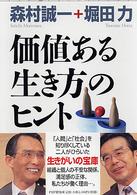Full Description
Development and Implications of Antimicrobial Resistance One of the most ominous trends in the field of antimicrobial chemotherapy over the past decade has been the increasing pace of development of antimicrobial resistance among microbial pathogens. The hypothesis that man can discover a magic bullet to always cure a particular infection has proved false. Physicians are now seeing and treating patients for which there are few therapeutic alternatives, and in some cases, none at all. Until recently there was little concern that physicians might be losing the war in our ability to compete with the evolving resistance patterns of microbial pathogens. Now the general public is very aware of the threat to them if they become infected, thanks to cover story articles in major magazines such as Time, Newsweek, newspapers, and other news sources. Antimicrobial resistance is not a novel problem. Shortly after the widespread introduction of penicillin in the early 1940s, the first strains of penicillin-resistant staphylococci were described. Today it is an uncommon event for a clinical laboratory to isolate an S. aureus that is sensitive to penicillin. Other gram-positive strains of bacteria have become resistant, including the exquisitely sensitive Streptococcus pneumoniae. Sensitivity to vancomycin was once so uniform that it was used in routine clinical laboratories as a surrogate marker for whether an organism should be classified as a gram-positive. That criterion can no longer be relied upon because of emerging resistance among some species. Gram-negative bacteria, viruses, fungi, and parasites all have succeeded in developing resistance.
Contents
Antimicrobial Resistance: A Global Perspective.- Resistance to Antibacterial Agents.- Bacterial Resistance to Carbapenems.- Bacterial Resistance to Fluoroquinolones: Mechanisms and Patterns.- A Comparison of Active Site Binding of 4-Quinolones and Novel Flavone Gyrase Inhibitors to DNA Gyrase.- A Low-Copy Number Plasmid Mediating ?-Lactamase Production by Xanthomonas maltophilia.- Glycopeptide Resistance in Gram-Positive Pathogens.- Vancomycin-Dependent Enterococci: A Clinical and Laboratory Assessment.- Streptococcus pyogenes: Resistant, Tolerant, Neither or Both?.- The Antimicrobial Susceptibility of Streptococcus pyogenes Isolates from the Philadelphia Area.- Antibiotic-Resistance in Streptococcus pneumoniae.- Emerging Trends in Antimicrobial Resistance: A Laboratory Perspective.- Molecular Epidemiologic Analysis of Antibiotic Resistant Microorganisms.- Patterns of Resistance in Organisms Causing Gynecologic Infections.- Practical Management of Patients Infected with Resistant Organisms: An Infection Control Perspective.- Resistance to Anti-Human Immunodeficiency Virus Therapeutic Agents.- Molecular Approaches to the Spreading Problem of Drug Resistant Malaria.- An Improved Method for in Vitro Susceptibility Testing of Trichomonas vaginalis.- Antifungal Drugs and Resistance.- Contributors.








